Decades of global, government-sponsored research in fusion science have established the tokamak-based reactor as the highest performing approach to fusion. In the past, tokamaks have had to be enormous in size to produce net energy from fusion. Commonwealth Fusion Systems (CFS) is using revolutionary superconducting magnets developed in collaboration with MIT to construct smaller and lower-cost tokamak fusion systems.
CFS is currently developing a tokamak device called SPARC. The company is working to demonstrate the critical fusion energy milestone of producing more output power than input power for the first time in a device that can scale up to commercial power plant size. However, this achievement will only be possible if the plasma doesn’t melt the device.
Researchers from CFS and Oak Ridge National Laboratory (ORNL) have collaborated on fusion boundary research through a series of projects. These projects include ORNL Strategic Partnership Projects and Laboratory Directed Research and Development projects, work under the Innovation Network for Fusion Energy (INFUSE) program, and other work in partnership with General Atomics.
Throughout this collaboration, ORNL has developed the simulation capabilities that are necessary to address critical and time-sensitive design issues for the SPARC tokamak.
The study was published in Nuclear Fusion. It evaluated actuator configurations, in particular those used to control neutral gas flowing in and out of the tokamak.
A power-producing fusion plasma reactor must reach a temperature at its center hotter than the core of the Sun. At the same time, it must maintain a temperature at the edge of the plasma that is cool enough to avoid vaporizing the fusion device.
New studies have found that using louvers at the bottom of the fusion device create local conditions that can reduce the temperature of the edge plasma. The louvers permit the hot plasma to “detach” from the walls of the device, spreading out the heat.
In order to predict the actuators’ ability to control the plasma, ORNL developed new methods to execute a major simulation code, SOLPS-ITER, in a dynamic, time-dependent manner, focused on the actuator design.
The SOLPS-ITER code models plasma and neutral transport in the boundary region of fusion devices. It has been used to design plasma-facing components for many tokamaks, including the multinational ITER device under construction in France.
This new dynamic simulation goes beyond standard steady-state models and was developed in a staged manner. First, it considered only plasma transport for predictive control. Next, the response of neutral particles to louver actuators was added. Finally, a fully coupled dynamic model was developed.
The CFS team used this information from their simulation to zero in on the simplest and least expensive actuator and diagnostics options from a large number of options. This effort enables fusion energy scientists to better control tokamak devices.
The results of this study indicate a new path for handling this extreme heat, bringing researchers one step closer to a commercial fusion energy source. The study utilized a new simulation capability that accelerates work on whole-device modeling and helps inform researchers about the systems that will control the SPARC plasma.
In addition to the SPARC tokamak project, CFS is working on its successor, the ARC power plant, to supply power to the electric grid.
Blog
-

Nuclear Fusion 106 – Commonwealth Fusion Systems Working On Adding Louvers To Tokamaks To Cool Plasma
-
Nuclear News Roundup Jan 20, 2025
Trump says new nuclear deal with Iran can be brokered aa.com.tr
OPG awards major contract for Pickering refurbishment world-nuclear-news.org
Expansion of Swedish repository under way world-nuclear-news.org
Czech minister says KHNP contract timetable still on track world-nuclear-news.org
-
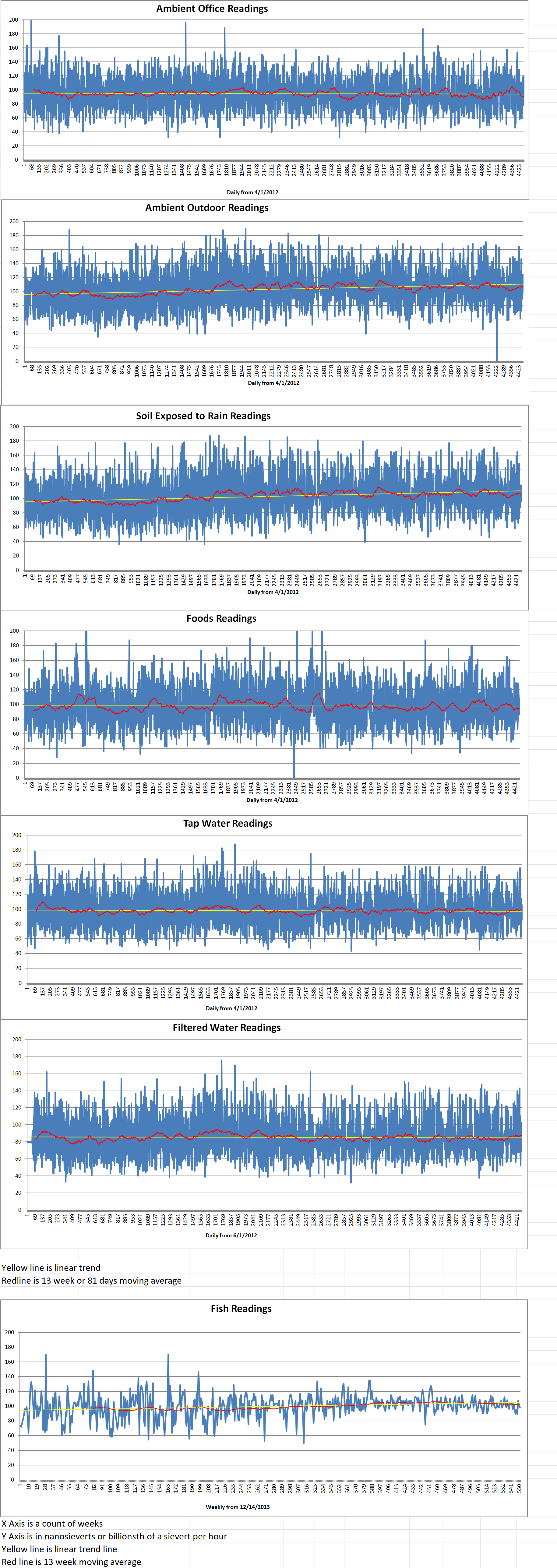
Geiger Readings for Jan 20, 2025
Ambient office = 121 nanosieverts per hour
Ambient outside = 116 nanosieverts per hour
Soil exposed to rain water = 118 nanosieverts per hour
Corn from Central Market = 91 nanosieverts per hour
Tap water = 86 nanosieverts per hour
Filter water = 71 nanosieverts per hour
-
Nuclear News Roundup Jan 19, 2025
Nuclear Stocks Soar on Stargate AI Infrastructure Announcement oilprice.com
Japan lawmakers may attend U.N. nuclear ban meeting, Ishiba to skip English.kyodonews.net
Susquehanna Nuclear challenges FERC rejection of connection agreement to power AWS data center detacenterdynamics.com
-
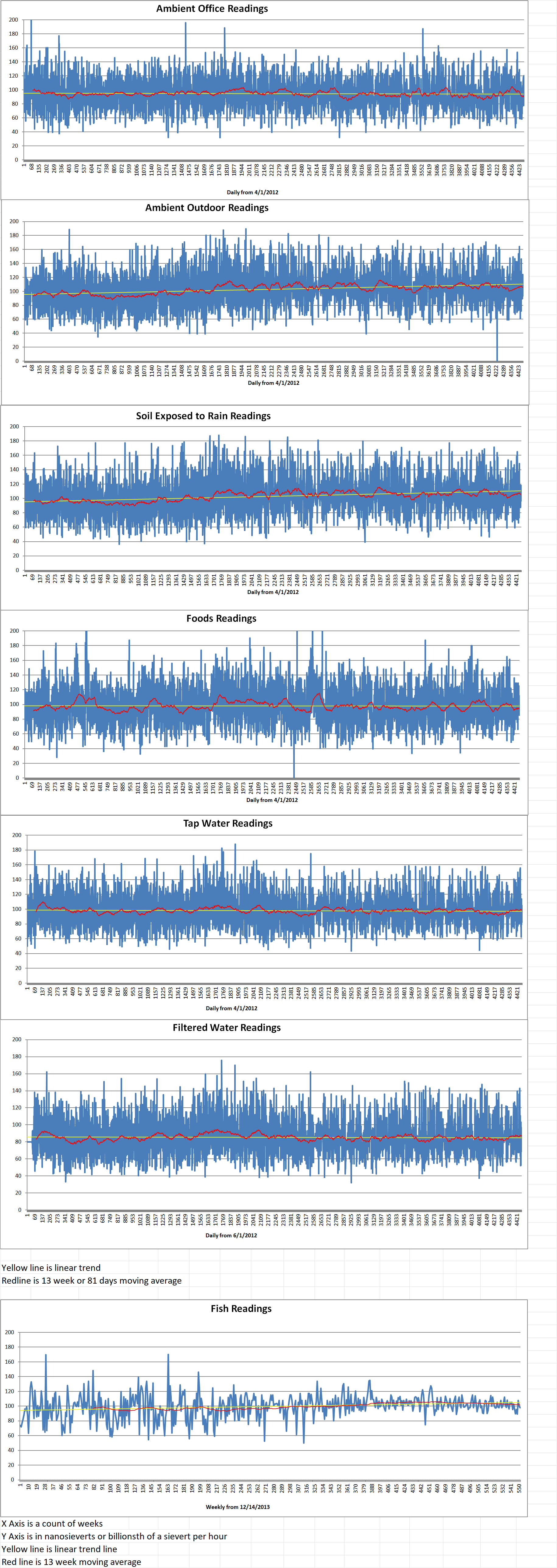
Geiger Readings for Jan 19, 2025
Ambient office = 106 nanosieverts per hour
Ambient outside = 99 nanosieverts per hour
Soil exposed to rain water = 97 nanosieverts per hour
Beefsteak tomato from Central Market = 100 nanosieverts per hour
Tap water = 102 nanosieverts per hour
Filter water = 88 nanosieverts per hour
-
Nuclear News Roundup Jan 18, 2025
Korean robot aims for nuclear decommissioning market world-nuclear-news.org
GOP lawmakers eye small nuclear in Indiana, despite advocate concerns indiniacapitalchronicle.com
Clash over decision to extend life of nuclear reactors bbc.com
-
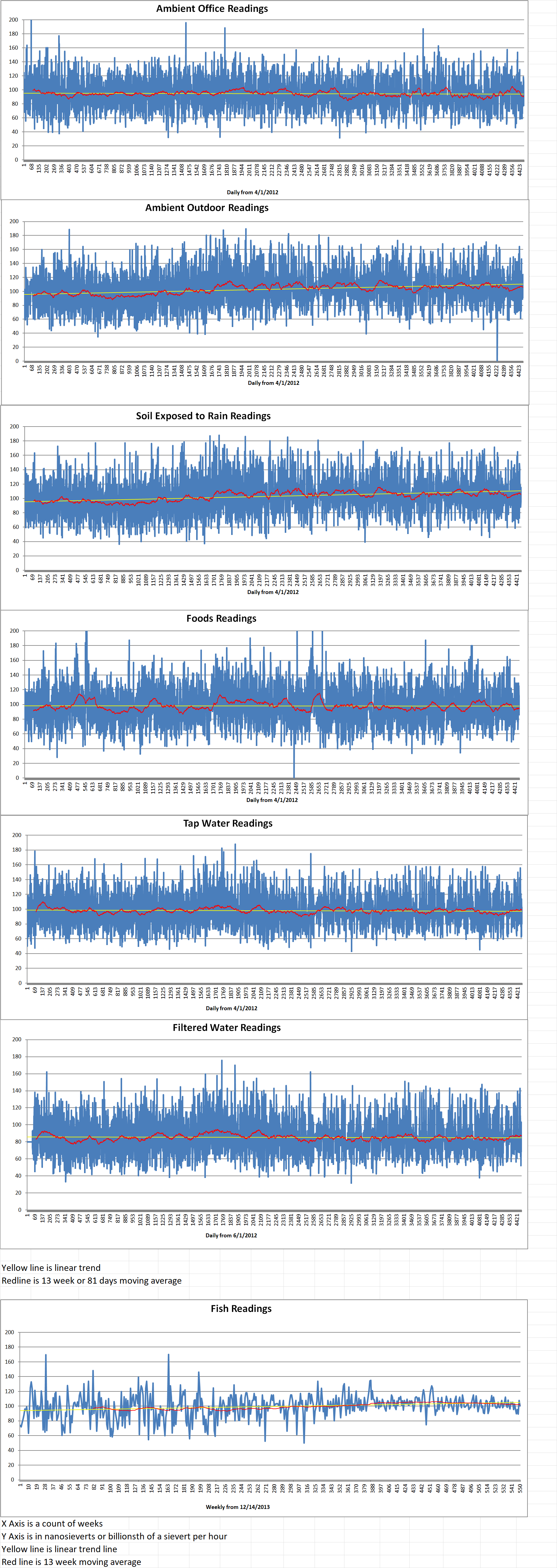
Geiger Readings for Jan 18, 2025
Ambient office = 100 nanosieverts per hour
Ambient outside = 124 nanosieverts per hour
Soil exposed to rain water = 115 nanosieverts per hour
Avocado from Central Market = 106 nanosieverts per hour
Tap water = 82 nanosieverts per hour
Filter water = 69 nanosieverts per hour
Dover Sole from Central = 98 nanosieverts per hour
-
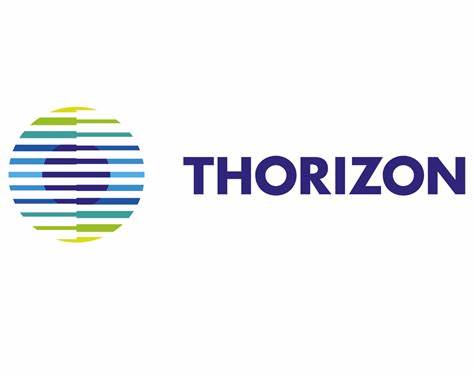
Nuclear Reactors 1465 – A Dutch Consortium Of Nuclear Companies Are Collaborating On Small Modular Reactors And Molten Salt Reactors
A Dutch consortium of technology companies including Demcon, Thorizon and VDL Group have signed a project agreement to demonstrate and validate the manufacturability, safety, and functionality of critical components and non-nuclear (sub)systems of molten salt reactors (MSR).
The collaboration between Demcon, Thorizon and VDL Group was formalized in October of 2024 during a visit by Climate and Green Growth Minister Sophie Hermans to the Dutch Institute for Fundamental Energy Research (DIFFER), a leading research institute in Eindhoven. During her visit, the consortium partners, along with DIFFER, signed a letter of intent to facilitate small modular reactor (SMR) technology development in the Netherlands. A project agreement between the partners was signed in December of 2024. The consortium aims to establish an advanced testing facility where molten salt reactor technologies can be developed and tested.
In early December of last year, the consortium reached a major milestone by submitting a grant application to the Province of Noord-Brabant. Thorizon said that this application highlights the commitment of the involved parties to foster innovation and sustainable development in the region.
In 2021, Noord-Brabant launched the innovation coalition ‘Nuclear Energy for the Future’ with the goal of leveraging the manufacturing industry and research institutes in the province to accelerate the development of MSRs.
Thorizon said, “Participating in this project will not only provide companies with valuable experience but also help them attain the qualifications needed to become part of the supply chain for SMRs and large-scale reactors planned in the Netherlands. This strengthens the competitiveness of the Dutch manufacturing sector, creates new jobs, and fosters innovation. The project aims to deliver several component prototypes and a test facility in Noord-Brabant within two and a half years.”
Kiki Lauwers is the CEO of Thorizon. She said, “For Thorizon, this is a unique opportunity. Companies like VDL and Demcon have unparalleled experience in realizing high-tech projects, from concept to prototype and serial production. During our collaboration with DIFFER, we have seen that Brabant offers world-class knowledge and facilities and can act quickly. With these partners, we share an ambitious and pragmatic mindset that is crucial for our development and successful collaboration.”
Thorizon is a spin-off from NRG Pallas, which operates the High Flux Reactor in Petten. It is developing a one-hundred megawatt MSR which is targeted at large industrial customers and utilities. The company plans to begin building its first reactor, Thorizon One, around 2030.
Thorizon currently collaborates with nuclear industry leaders such as Orano, Tractebel and EDF, and its project has been selected by the European Commission and the French government under the France 2030 investment plan.
MSRs use molten fluoride salts at low pressure as primary coolant. They may operate with fast neutron spectrums, and with a variety of fuels (A fast neutron spectrum is characterized by neutrons carrying energies above one million electron volts.) Much of the interest today in reviving the MSR concept relates to using thorium (to breed fissile uranium-233). An initial source of fissile material such as plutonium-239 needs to be provided.
The DIFFER research institute conducts leading-edge research on fusion energy and chemical energy. It supports the development of MSRs through its unique DICE (DIFFER Irradiation-Corrosion Experiment) research facility. DICE is used to optimize material choices taking into account the interaction between corrosion, heat, and radiation. -
Nuclear News Roundup Jan 17, 2025
Korean robot aims for nuclear decommissioning market world-nuclear-news.org
GOP lawmakers eye small nuclear in Indiana, despite advocate concerns indiniacapitalchronicle.com
Clash over decision to extend life of nuclear reactors bbc.com
-
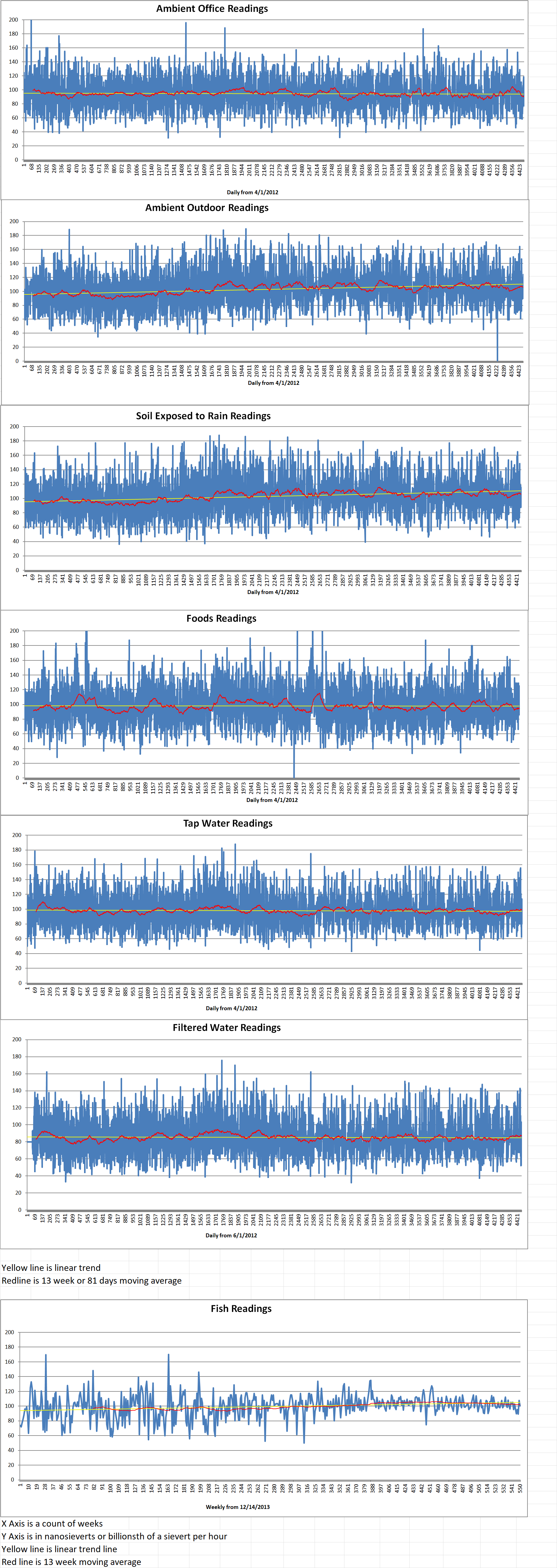
Geiger Readings for Jan 17, 2025
Ambient office = 78 nanosieverts per hour
Ambient outside = 103 nanosieverts per hour
Soil exposed to rain water = 108 nanosieverts per hour
Red bell pepper from Central Market = 86 nanosieverts per hour
Tap water = 98 nanosieverts per hour
Filter water = 73 nanosieverts per hour
